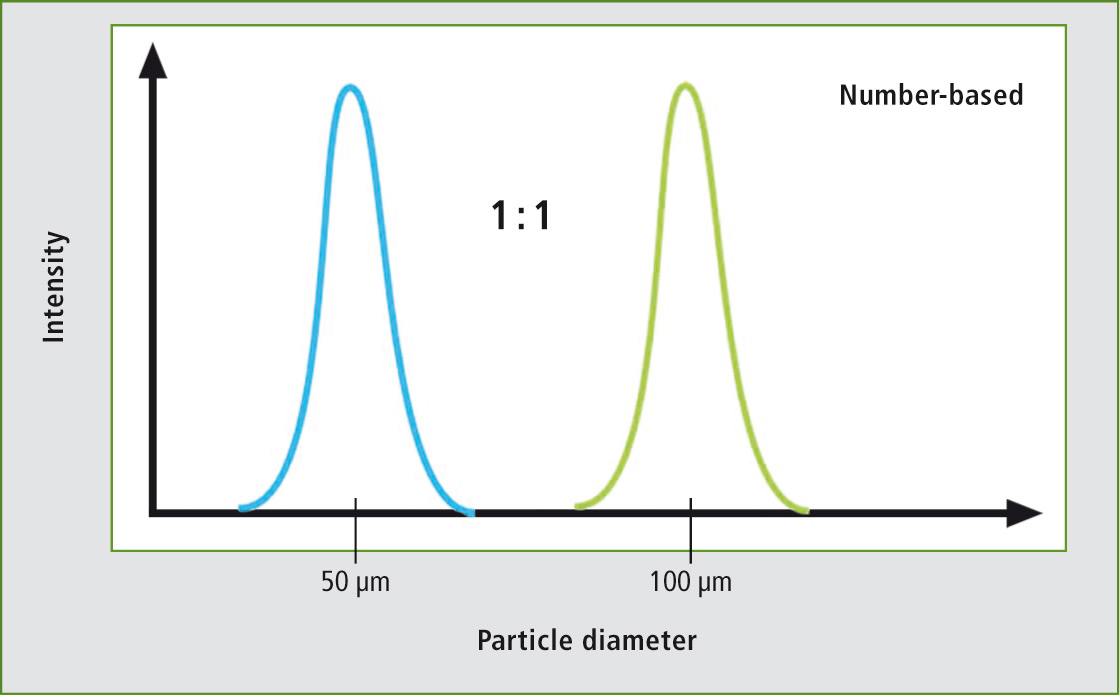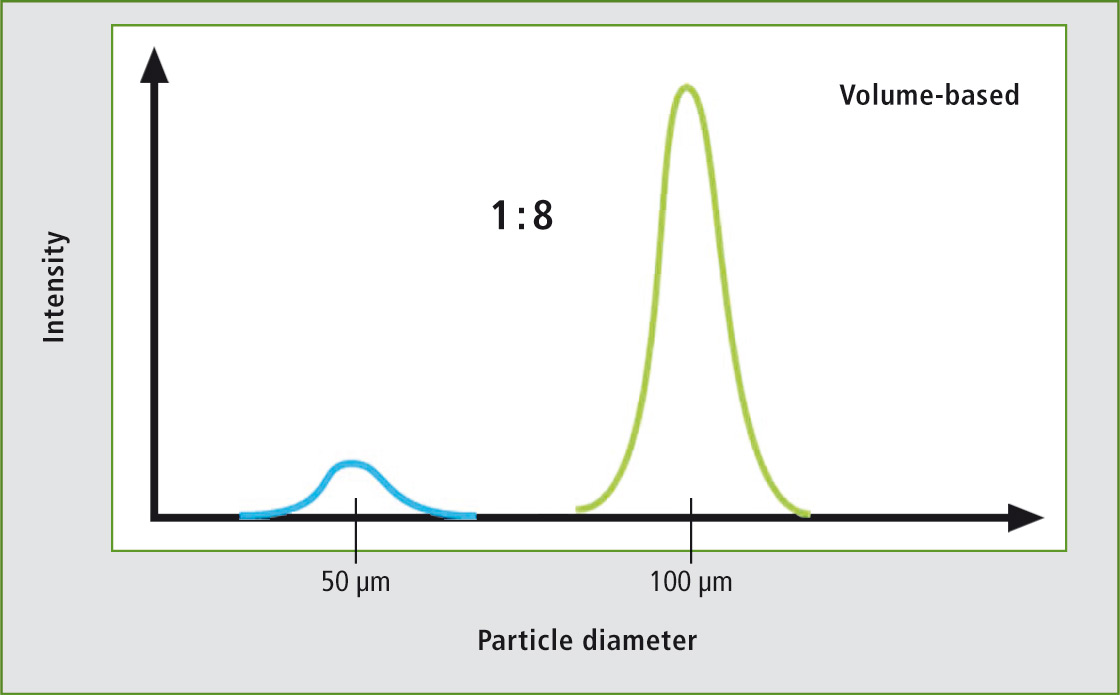Where’s the difference?
Volume-based vs. number-based particle size measurement
Shimadzu offers a broad variety of particle size instruments, which support the well-established laser diffraction method, able to cover the measurement range of 0.5 nm to 3,000 µm. Additionally and exclusively Shimadzu offers the patented induced grating method.
A wide range of accessories enables measurements of highly concentrated, dry or small-volume samples. The phrases “volume based particle size distributions” and “number based particle size distributions” often appear when discussing the results of particle size measurements.
What is the difference between number and volume based result?
When looking at particle size distributions, “number-based” and “volume-based” change the scaling of the y-axis. If not explicitly mentioned, the scaling is “volume-based” as it is the more typical scaling. But “number-based” is also quite common.
Here’s the difference: Let’s assume that a sample solution contains particles with an average radius of 50 µm respectively 100 µm. The ratio of these particles is 1:1.
When looking at “number-based” results two peaks will appear: One peak is at 50 µm and the second at 100 µm. The ratio of these peaks is 1:1.
 Figure 1: Number-based particle size measurement
Figure 1: Number-based particle size measurement
When changing to a “volume-based scaling” the ratio of these peaks changes to a ratio of 1:8. The peak at 100 µm is now eight times larger in comparison to the peak at 50 µm.
 Figure 2: Volume-based particle size measurement
Figure 2: Volume-based particle size measurement
Here’s the explanation
When looking at number-based results, the number of particles is taken into account. At a mixture of 1:1, the intensity of the lines is self-explanatory.
When looking at volume-based results, the volume of the particles is considered. The software implies that all particles are spheres and calculates their volumes according to

Using particles with 50 µm and 100 µm radii (1:1 mixture) results in following equations:

Dividing 4188790 by 523598 results in 8. So 1:8 is the ratio of the peaks at 50 µm and 100 µm in the example above.
In the analysis of an unknown sample containing larger and smaller particles and “volume-based” analysis is chosen, it is possible that the peak at lower particle sizes cannot be seen. On the other hand, it is much easier when reporting with a number-based scaling to find the smallest particles of the sample solution.